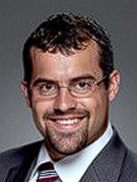VOLUME 37, ISSUE 2

Craig J. Lilie, M.D.
TSA Newsletter Education Editor
Assistant Professor and Residency Core Program Director
Baylor College of Medicine-Temple
Baylor Scott & White Medical Center
Temple, TX
Anesthesiology Residency Training Growth in Texas
As a result of increased demand for anesthesiologists and a desire to train more residents, the state of Texas has seen an increase in the number of residency programs and the number of positions offered within programs. Specifically, we have three new anesthesiology residency programs initiated over the last few years as well as growth in residents being trained in established programs. For instance, the author’s institution has increased the total resident cohort by 8 over the last 5 years. Admittedly, this is but one potential solution to meet the demand our specialty faces.
The increased demand for anesthesiologists is readily apparent for many and evidenced in part by both rising numbers of job postings and compensation changes seen in recent years for anesthesiologists. Nationally, the most recent Match data from the National Resident Matching Program demonstrates that 2270 of 2276 of anesthesiology residency positions filled in 2025. For context, there were 1695 positions offered in the 2015 Match, representing an increase of 581 positions over the last 10 years. Additionally, interest in anesthesiology residency is high with 1,242 PGY-1 applicants to anesthesiology remaining unmatched this year.
In order to train more residents, there is a significant amount of effort that must be put forth by departments and programs. This includes a variety of efforts such as the hiring of teaching faculty and provision of administrative and institutional support, amongst other Accreditation Council for Graduate Medical Education (ACGME) requirements which must be fulfilled. Current Texas department and residency leaders of this significant effort are included below. Also shown are the number of approved positions per clinical anesthesia year by program for academic year 2024-2025, which presently totals 162 residents per year statewide. As newer programs mature and fill all available positions, it is likely that the total number of residents finishing training each year will soon approximate this total.

References:
1. Abouleish AE, Pomerantz P, Peterson MD, Cannesson M, Akeju O, Miller TR, Rathmell JP, Cole DJ. Closing the Chasm: Understanding and Addressing the Anesthesia Workforce Supply and Demand Imbalance. Anesthesiology. 2024 Aug 1;141(2):238-249. doi: 10.1097/ALN.0000000000005052. PMID: 38884582.
2. Accreditation Council for Graduate Medical Education. Anesthesiology Programs. https://apps.acgme.org/ads/Public/Reports/ ReportRun. Accessed 6/5/2025.
3. Accreditation Council for Graduate Medical Education. Advanced Program Search. https://apps.acgme.org/ads/Public/ Programs/Search. Accessed 6/9/2025.
4. American Society of Anesthesiologists. Anesthesia Workforce Trends, May 1 2025. Center for Anesthesia Workforce Studies; Schaumburg, IL.

